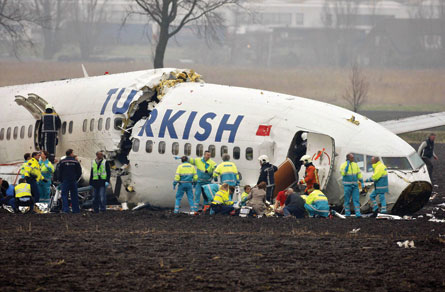Securing the edges of the envelope
AN INTERNATIONAL group formed under the auspices of the UK Royal Aeronautical Society will this year complete a fresh look at upset prevention and recovery training, with the aim of reducing loss-of-control accidents in the airline industry.
Formed in 2009, the International Committee for Aviation Training in Extended Envelopes (ICATEE) comprises two subcommittees - a training group and a research and technology group, both tasked with developing best practices for upset prevention and recovery training.
Once published by the International Civil Aviation Organisation, the ICATEE training manual will, ideally, be adopted by aviation authorities worldwide to make upset prevention and recovery training a standard part of all pilot training. Currently, ICAO recommends the training only for the multi-crew pilot licence.
The group is also tasked with making changes to ICAO's guidance on the qualification and testing of flight simulators to accommodate the upset prevention training.
A major project for the training group is to standardise and simplify the upset recovery training aid first published by Airbus and Boeing in 1998 to teach pilots how to recognise and recover from upsets.
 |
|---|
©Rex FeaturesThe 2009 Turkish Airlines Boeing 737 crash in Amsterdam was a "startle and surprise" accident |
"Many, many training departments don't know it exists," says Lou Nemeth, the training group's co-chairman, who by day works as chief safety officer for simulator and training provider CAE. "It's 267 pages long. People are overwhelmed."
A CAE-hosted study last year revealed that from a cross-section of more than 120 representatives of the airline and business aviation community, only 62% said they had used the aid to train pilots.
The ICATEE training group plans to simplify the document and reduce it to 50-page handbooks for pilots, instructors and regulators. It will be based largely on a training matrix the group developed to identify awareness, recognition and avoidance and recovery tasks, along with elements such as recurrency and training methods. Nemeth says the task analyses are several hundred lines long and cover "what a pilot should know or be able to do".
The research and technology group, by contrast, "decides what and how they can change the engineering behind simulation and other training tools to meet the training objectives", he adds.
The group has some "stretch" goals that include expanding simulators' operational envelope and creating tools that enable instructors to accurately teach edge-of-the-envelope upset recoveries as part of upset prevention training. "What may come of this is visual aids to the instructor, so when he's teaching, he'll know if the crew is staying within the boundaries during a recovery," says Nemeth.
The technology group's recommendations, which also include methods to "startle and surprise" pilots in simulators, are to be included in an ICAO simulators qualification update early next year.
Nemeth points to "startle and surprise" accidents, such as the 2009 Colgan Bombardier Q400 crash and 2009 Turkish Airlines Boeing 737 crash in Amsterdam, as textbook examples of the importance of training rather than technology to prevent loss of control.
"Those accidents have brought a lot of public attention and pressure on us," he says. "There is no clear technology answer."
Source: Flight International
















